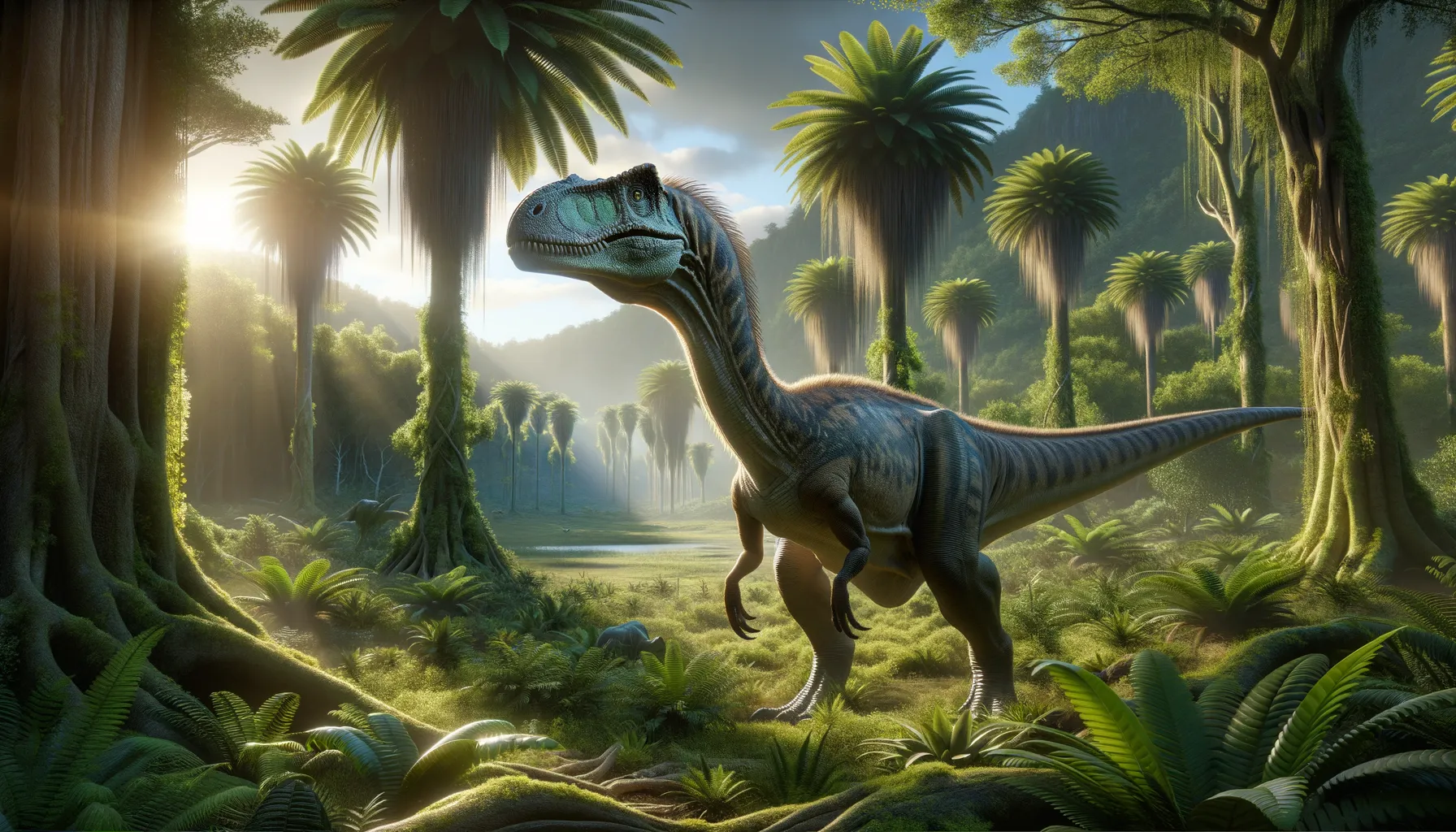
Gongpoquansaurus
The duck-billed grazer of ancient China.
Period
Cretaceous
Length
Roughly 8 meters long.
Height
Around 3 meters tall at the hips.
Weight
Approximately 2,000 kilograms (2 metric tons).
Gongpoquansaurus was a medium-sized hadrosaur dinosaur that roamed the earth during the late Cretaceous period. Characterized by its duck-billed appearance, it was an herbivore thriving in lush environments. Known for its adaptive teeth, it was well-suited for grinding tough plant materials. Gongpoquansaurus played a significant role in the ecosystem, contributing to the evolutionary advancements seen in late Cretaceous herbivorous dinosaurs.
Diet
Gongpoquansaurus primarily fed on a variety of plants that were abundant in its habitat. Its flat-topped grinding teeth were perfect for processing tough foliage, allowing it to subsist on fibrous plant material.
Hunting
As a herbivore, Gongpoquansaurus didn't hunt, but it might have been vigilant in seeking new plant sources. In order to find enough food, it likely migrated alongside other herbivorous species to optimize feeding opportunities.
Environmental challenges
Gongpoquansaurus faced challenges such as changing climates and the pressures of evolving flora. Competition with other herbivores for food was likely fierce, prompting adaptations in its feeding strategies. Predation from large theropods was a constant threat that shaped its behavior and survival tactics.
Speed
Moderate, similar to other hadrosaurs.
Lifespan
Around 50-60 years.
First discovery
Discovered in Gansu, China in 1997.
Fun Facts
- Gongpoquansaurus was a plant-eating dinosaur that lived during the Early Cretaceous period, around 125 million years ago.
- This dinosaur was part of the hadrosauroid family, which are known for their duck-billed appearance.
- Fossils of Gongpoquansaurus were first discovered in China, in the Gansu Province.
- The name Gongpoquansaurus means 'Gongpoquan lizard,' named after the location near where its fossils were found.
- Gongpoquansaurus was likely a herding dinosaur, meaning it lived in groups, which could have provided protection against predators.
- It had a long tail, likely used for balance while moving on its two strong hind legs.
Growth and Development
From hatchlings to adults, Gongpoquansaurus underwent significant size increases, relying on abundant vegetation to fuel its growth. Juveniles likely formed groups to enhance survival, learning key skills and behaviors from older individuals. Over time, they developed the iconic duck-bill and robust body that defined their adult form.
Habitat
This dinosaur thrived in what is now modern-day China, predominantly in riverine and floodplain areas. The region's lush vegetation provided an ideal environment for a herbivorous lifestyle. It had to navigate and adapt to environments that shifted with the changing climate of the Cretaceous.
Interaction with other species
Gongpoquansaurus likely coexisted with other herbivorous dinosaurs, possibly forming mixed herds for protection. Its presence would have attracted predators, stirring a dynamic herbivore-predator ecosystem. Symbiotic relationships with plants could have emerged, contributing to seed dispersal.
Natural lifespan
In favorable conditions, Gongpoquansaurus could live for several decades.
Reproduction
Gongpoquansaurus reproduced by laying eggs, possibly in communal nesting areas. Parental care might have been present, with adults protecting and nurturing their young in the vulnerable nesting stage. This ensured greater survival rates for hatchlings.
Social behaviour
Gongpoquansaurus may have exhibited social behavior, forming groups or herds for both foraging and protection against predators. Social structures within groups could have been based on size and maturity, with adults leading and young members learning the ropes of survival.
Fossil locations
Fossils of this dinosaur have been mainly discovered in Gansu Province, China, offering valuable insights into its habitat and existence. The region is rich with other Cretaceous fossils, providing a clearer picture of the era's ecosystem diversity.
